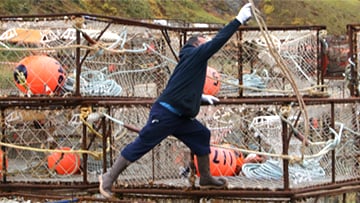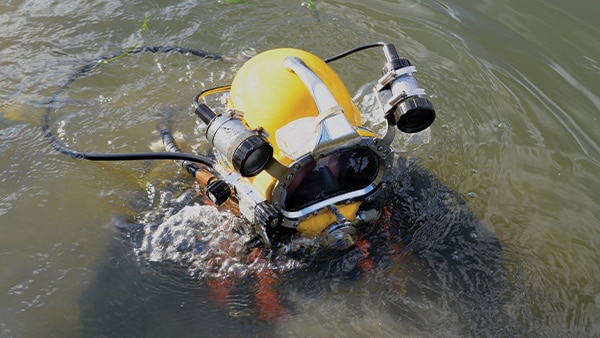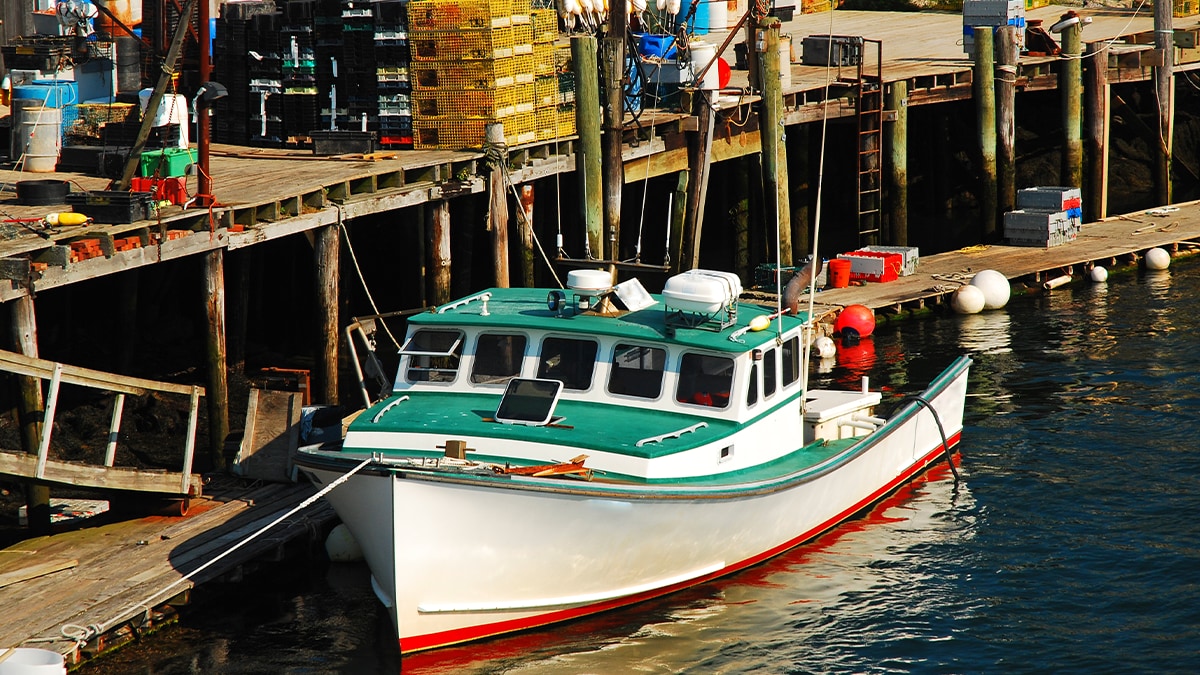Key points
- Fishermen engaged in dive fisheries or while conducting unplanned dives (e.g., to clear fouled propellers) may be exposed to diving hazards.
- Onshore hazards include falls from docks, struck-by incidents involving fishing gear at the dock or at the boatyard, and fires away from the vessel.

What do we know about diving hazards?

Though only accounting for about 5% of commercial fishing fatalities in the last 20 years, these types of accidents happen with regularity among fishermen engaged in dive fisheries or while conducting unplanned dives (e.g., to clear fouled propellers). Divers are at risk of decompression sickness, arterial gas embolism, and drowning. Between 2000 and 2019:
- 42 fishermen died while diving, representing ~5% of all deaths.
- By dive type, 69% of fatalities were among dive harvesters, with the remainder associated with unplanned/maintenance dives.
- Drowning was the most common cause of death (74%). Other causes include arterial gas embolism, oxygen toxicity, carbon monoxide poisoning, decompression sickness, and cardiac dysrhythmia.
- The most common contributing factors were diving alone or without a tender, using improper or inadequate equipment, pre-existing medical conditions, and drug and/or alcohol use.
For workers in dive fisheries or planning on engaging in maintenance dives:
- Don't dive alone. Find an experienced partner and/or tender to assist. They can monitor your dive and help respond to an emergency.
- Use proper gear. Make sure you are using the proper gear for your environment and type of fishing. If using surface supplied air (i.e., Hookah diving), the air compressors should be suitable for human breathing. Bailout air should be provided.
- Maintain diving equipment. Ensure that compressors and other equipment used in diving operations are in good working condition.
- Conduct emergency drills. It is vitally important to become familiar with bailout and other emergency procedures.
- Complete diving training or certification. Though usually not required to participate in dive fisheries, dive training and certification can help you have a safer dive. Topics generally include physiology, choosing the right gear for your dive and using it properly, buoyancy control, and safety procedures.
What Do We Know About Onshore Hazards?

This is the smallest category of fatalities in the NIOSH analysis of commercial fishing deaths and refers to deaths that occur when fishermen are working onshore, near shore, or at the dock. This category includes falls from docks, struck-by incidents involving fishing gear at the dock or at the boatyard, and fires away from the vessel. During 2000-2019:
- 34 deaths were considered onshore fatalities, representing ~4% of all deaths.
- Drowning was the most common cause of death (85%), often after falling from a dock or being swept from shore while working in onshore fisheries (e.g., clam harvesting).
For preventing onshore hazards, fishermen should:
- Wear a PFD while working around water. Many onshore fatalities were at-the-dock drownings. These often occur at night with no one around to help when the worker is trying to board their vessel. Wearing a PFD may help the person in the water self-rescue.
- Avoid excessive drinking. Excessive drinking is associated with unintentional injuries, including falls and drownings. Alcohol can make someone more susceptible to tripping or slipping and can also affect their response if they unintentionally enter the water.
Resources
Diving:
Alaska Marine Safety Education Association (AMSEA) – Provides training on recreational and seafood harvesting diving safety in Alaska.
Professional Association of Diving Instructors (PADI) – Provides education on diving and emergency first aid.
Alaska Department of Fish and Game – Regulates dive harvesting in the state of Alaska
Southeast Alaska Regional Dive Fisheries Association – Economic development non-profit representing harvest divers in Southeast Alaska
Alaska Diving Safety: Workshop Proceedings
Other Hazards:
US Coast Guard Commercial Fishing Vessel Marine Safety Alerts
Alaska Sea Grant Boatyard Hazards: Tips for Protecting Worker Safety and Health (FREE PDF DOWNLOAD)
NIOSH Fall Protection Topic Page
NIOSH Confined Space Safety Topic Page
NIOSH Hydrogen Sulfide (H2S) Topic Page
NIOSH Pocket Guide to Chemical Hazards
- NIOSH Commercial Fishing Incident Database (CFID)
